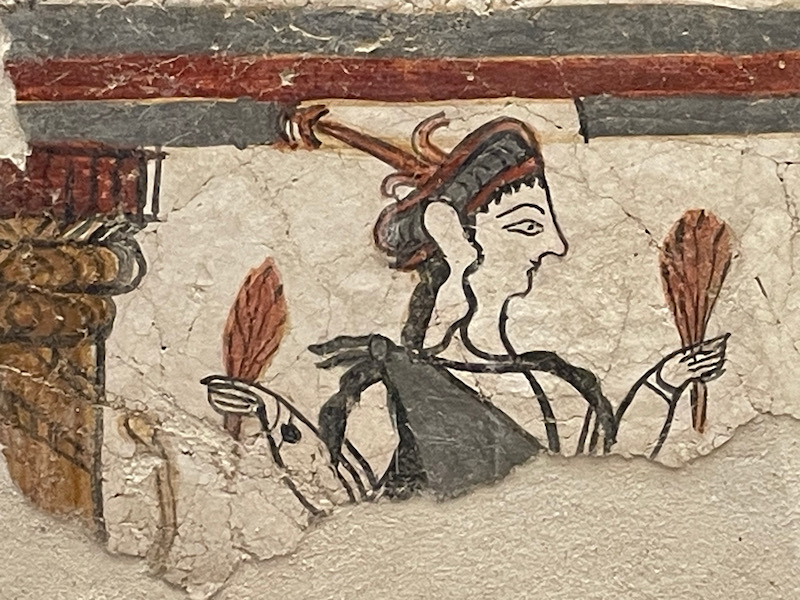Our Blog - Greece 2024 - Mycenae
In the second millennium BC (so REALLY old), Mycenae was one of the major centers of Greek civilization, a military stronghold which dominated much of southern Greece, Crete, the Cyclades and parts of southwest Anatolia. The period of Greek history from about 1600 BC to about 1100 BC is called Mycenaean in reference to Mycenae. At its peak in 1350 BC, the citadel and lower town had a population of 30,000 and an area of about 80 acres.
The acropolis is surrounded by a fortification wall that follows the natural contour of the ground. It was built in 3 different phases with the oldest part, the highest on the hill, dating from 1350. During the 2nd phase, around 1250, the Lions Gate (that you will see) and the North Gate were added. Here you can see a part of this 2nd-phase wall (Tom is there for size comparison with the blocks).
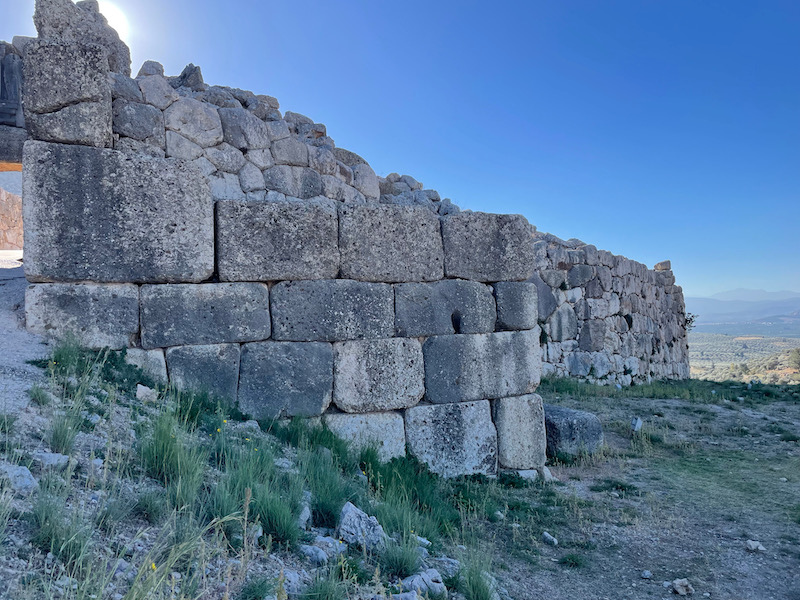
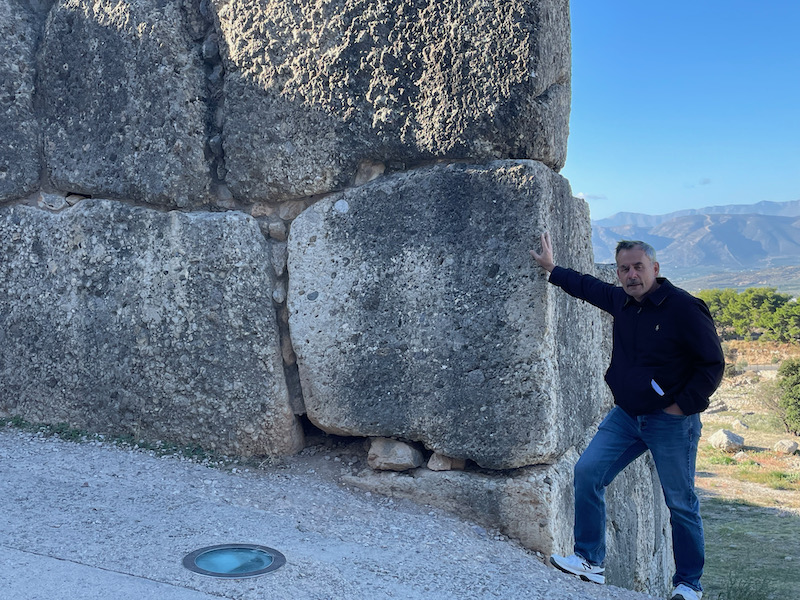
You enter the site through the Lion's Gate, which was described in the 2nd century AD by Pausania. I've mentioned him before, he was a Greek traveler who wrote "Description of Greece", which has been used at various sites. The main gate of the Acropolis was constructed in the middle of the 13th century BC. Above this gate is a triangular limestone slab with a relief of 2 lions facing each other, their front paws on 2 small altars supporting a column. Unfortunately, the heads are missing but the rest of the relief is still is great shape.
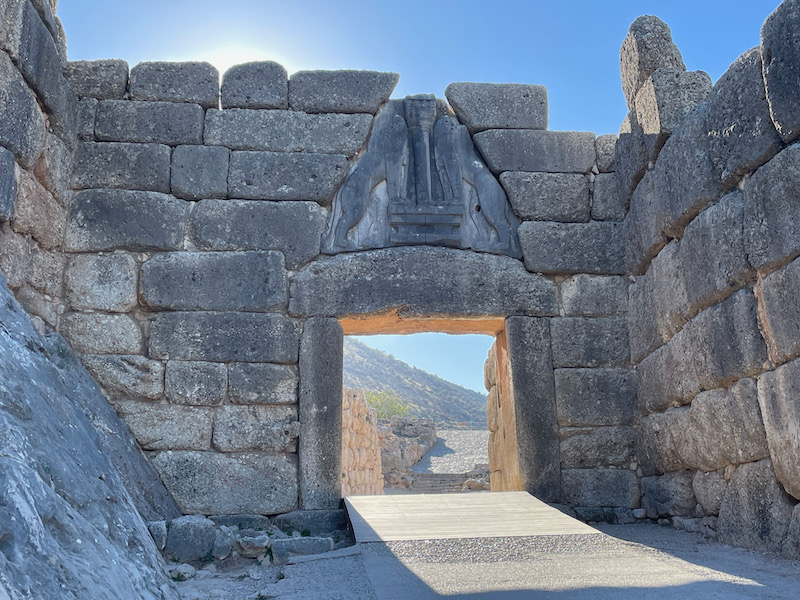
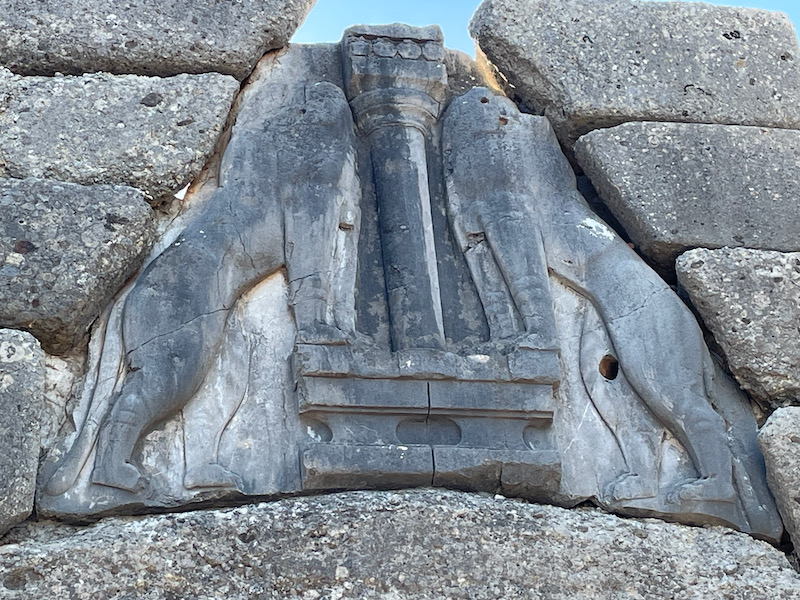
Just inside the gate are the remains of the Granary, named after carbonized cereal grains found in the bottom of it.
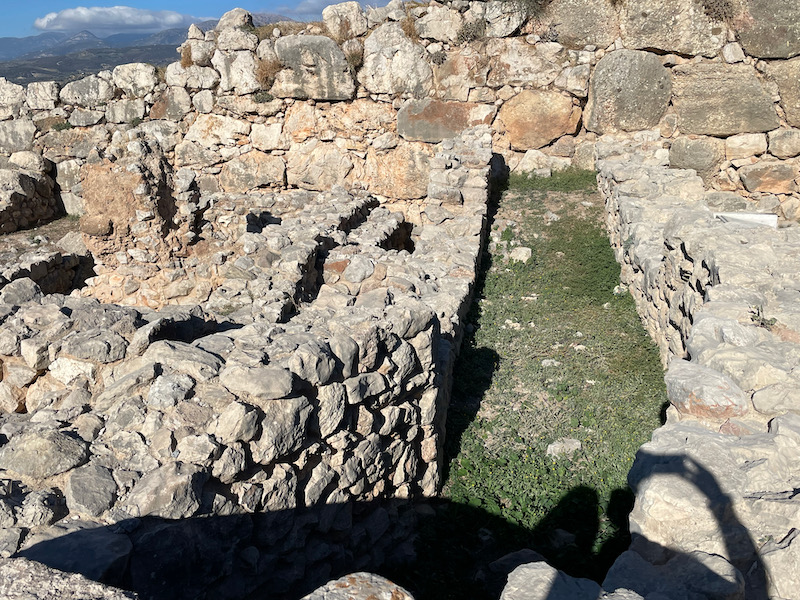
This was a 16th century royal cemetery called "Grave Circle A". Based on the dates, this pre-dates the building of the acropolis (13th century BC), and when the 2nd fortification walls were built, this grave circle ended up inside the walls. The circle is 90 feet in diameter and contains 6 shaft graves. A total of 19 bodies were found with 2 to 5 in each shaft. There were also funerary gifts found here that were more precious than the Grave Circle B (outside of the walls), so the assumption here is that it was a royal cemetery. One of the things found here was a gold death mask that became known as "The Death Mask of Agamemnon", ruler of Mycenae in Greek mythology. However, it has been proven that the burials are dated approximately 3 centuries earlier than Agamemnon is supposed to have lived.
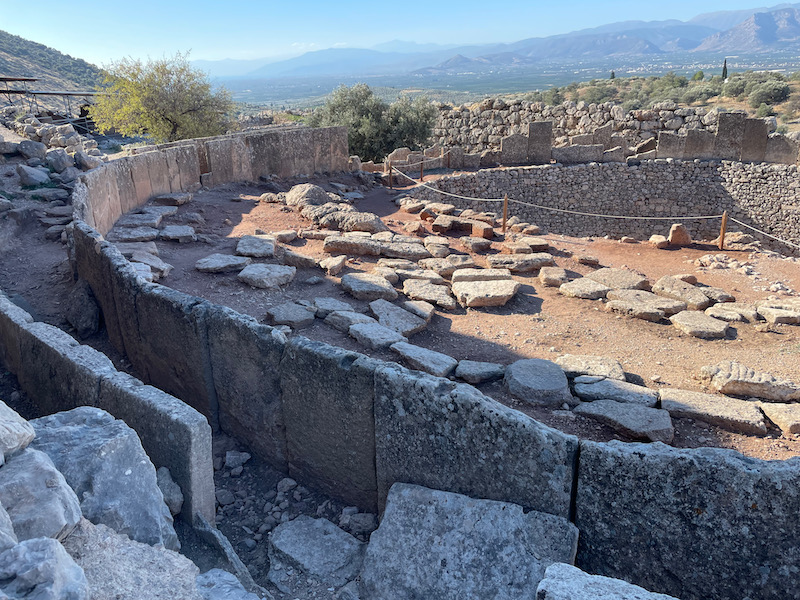
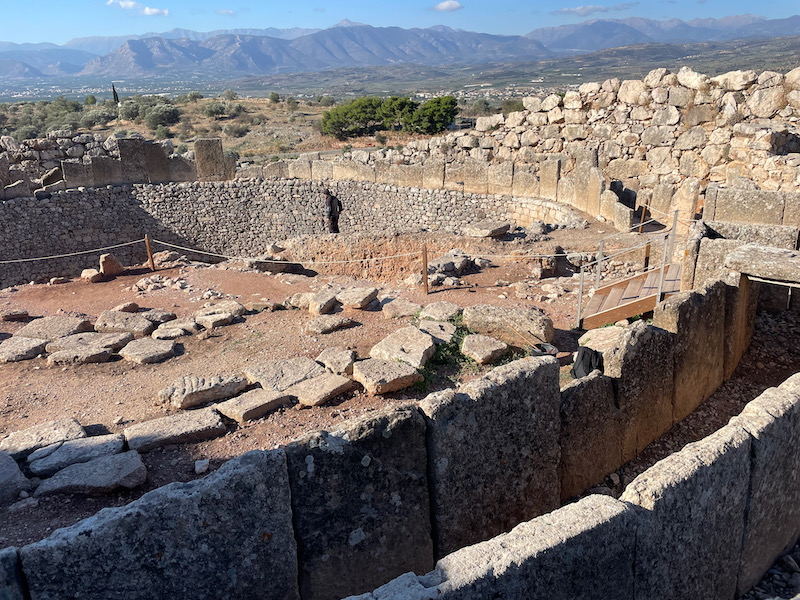
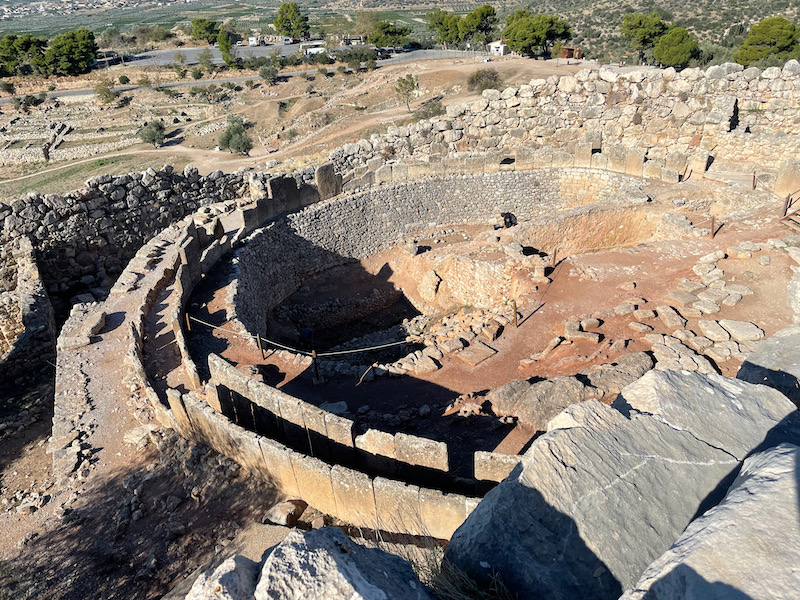
I don't know that I could have picked out these ruins as those of the Palace without the informational panel. The palace complex was built at the summit of the hill in the 13th century BC. It had an entrance portico, an antechamber, a large courtyard, and a main hall with a throne and fireplace. Part of the palace was destroyed by a fire and there is some evidence that they attempted to rebuilt it in the early 12th century BC. What you can see remaining are the bases of 2 columns on either side of an entrance, and a set of the bases of walls.
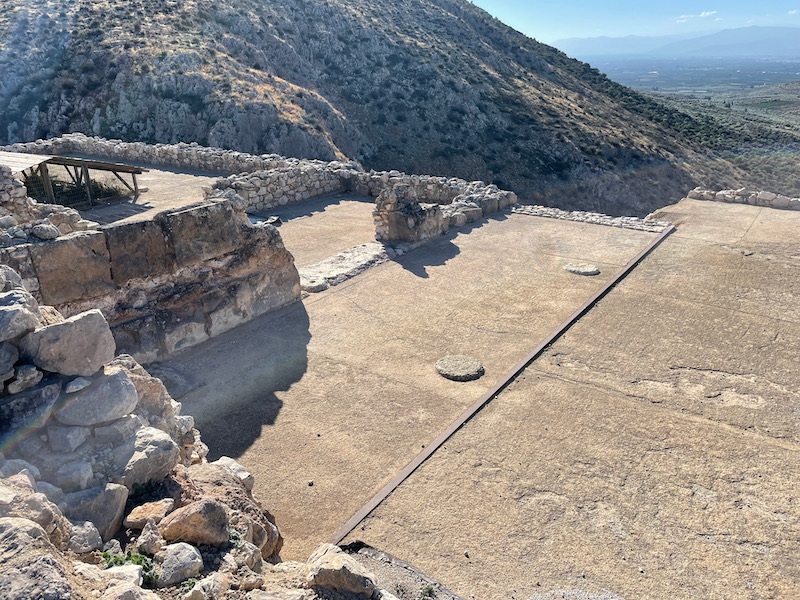
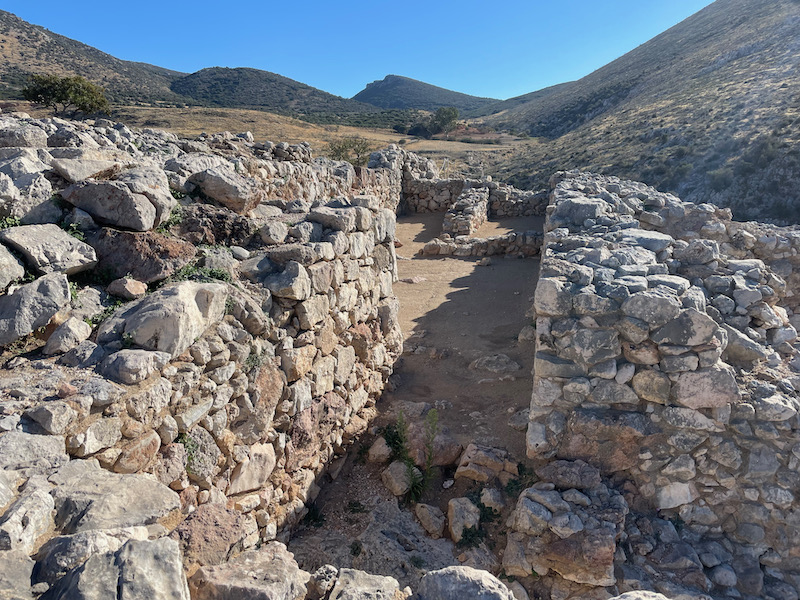
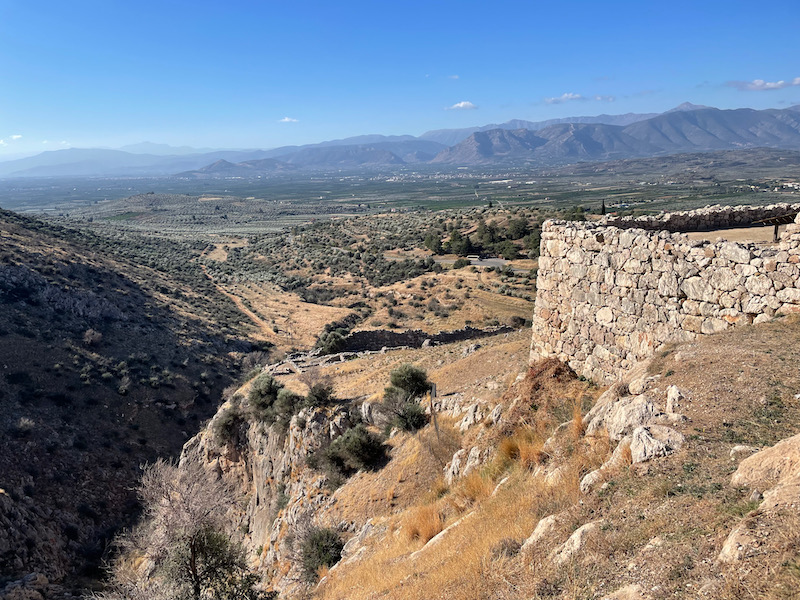
The North gate also dates from the 2nd phase of construction with massive rocks forming a doorway. It would have been closed with a wooden door.
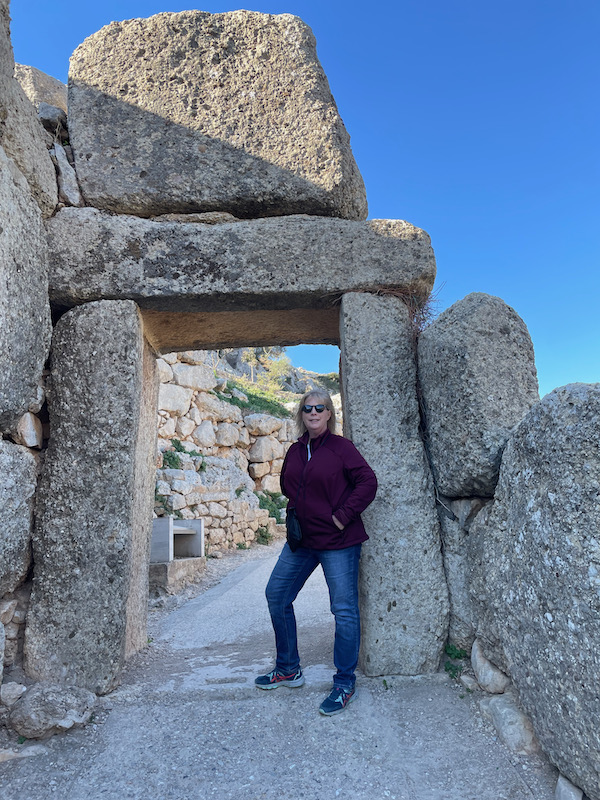
Here you can see the walls of the acropolis at the top of the hill (that we just toured), and down below, there are the remains of a couple buildings, as well as quite a few tombs. The first is a view of this section from the acropolis. Mycenae fell to the Argives in 468 BC and the area was abandoned. In the late 3rd century BC, a village was built, the "lower city", and the temple at the acropolis was rebuilt. Based on what was found, there were textile workshops here. It was abandoned again in the late 2nd century BC.
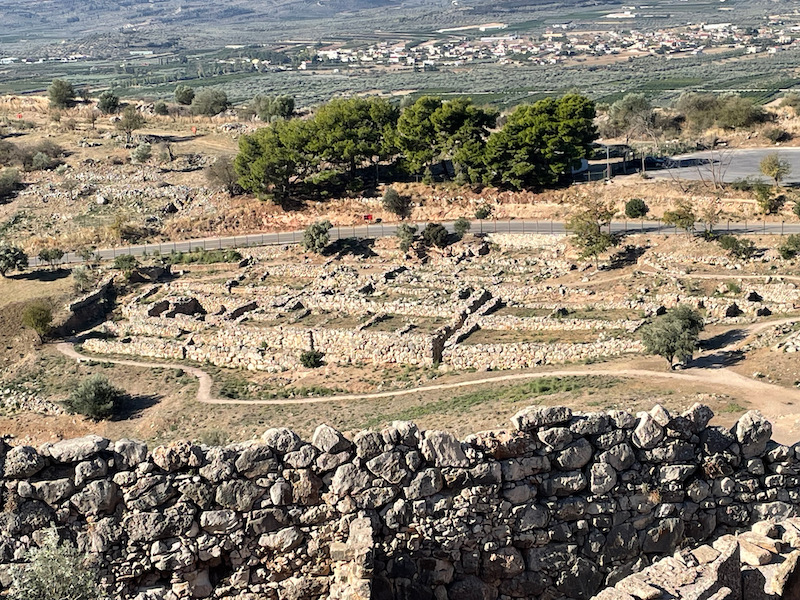
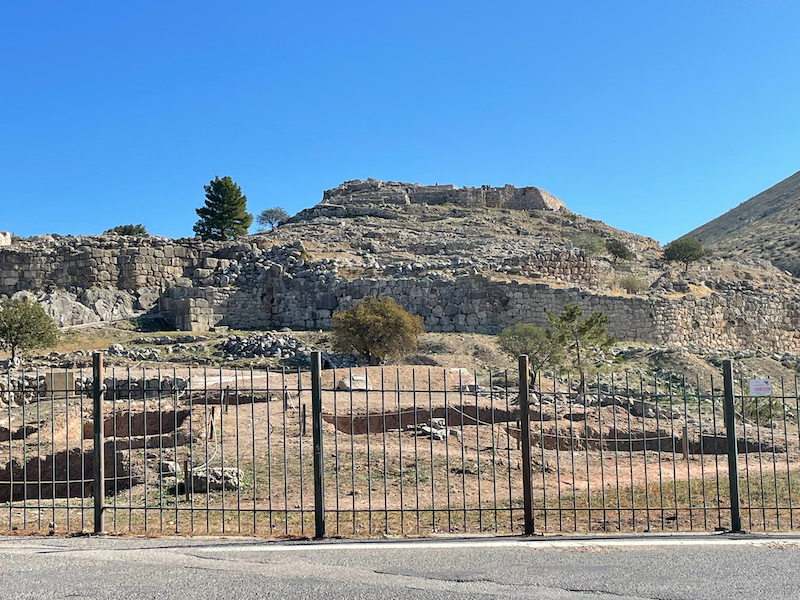
In antiquity, the Greeks used the term "Tholos" to mean a round, beehive-shaped building. Most of the ones that we saw were used as tombs, including the one here, but at least one (in the Greek Agora of Athens) was used as a meeting place. Based on the form, size, and construction, they date this back to the early 15th century BC (so before the walls and acropolis above it). It is dug into a natural hillside and then the dirt walls were lined with stones.
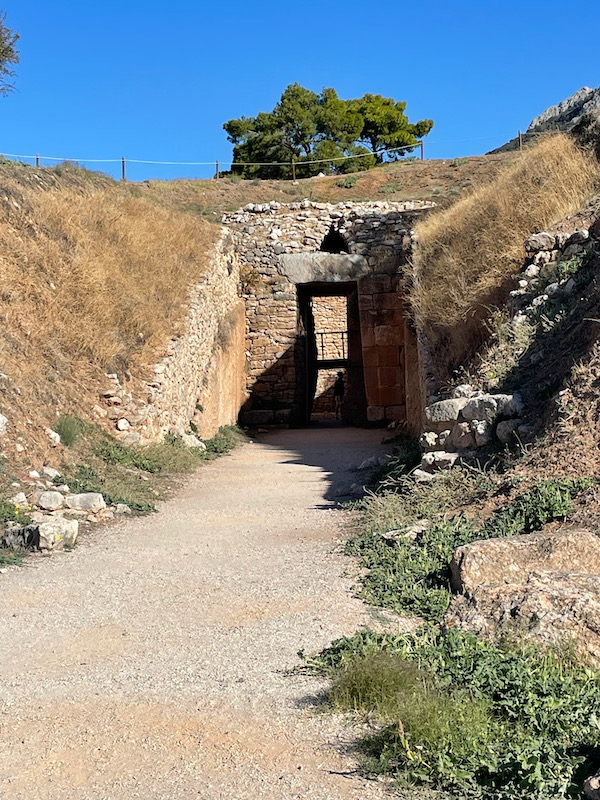
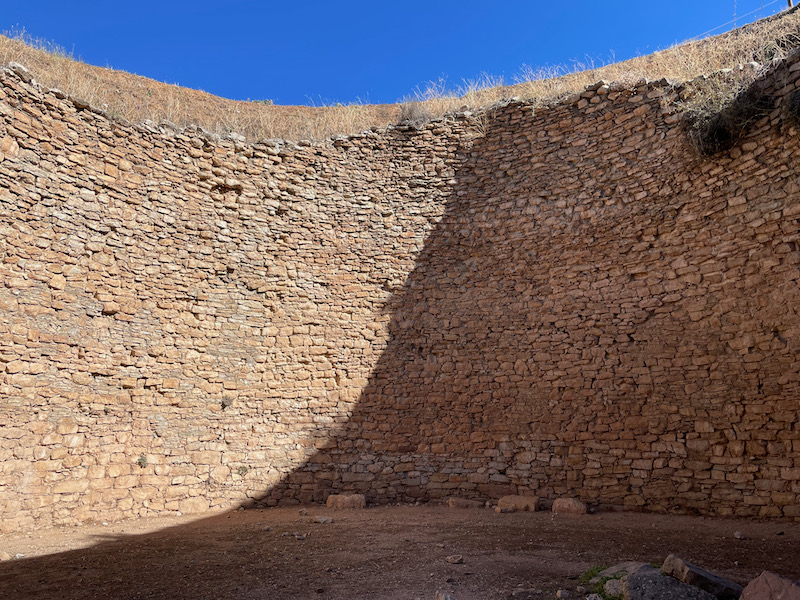
There is also a small museum that houses various pieces of pottery that was found here, most of them found in the various tombs that were uncovered. In many cases, pottery buried in the tombs are more likely to be found mostly intact or at least with most of the pieces there so that it can be reconstructed.

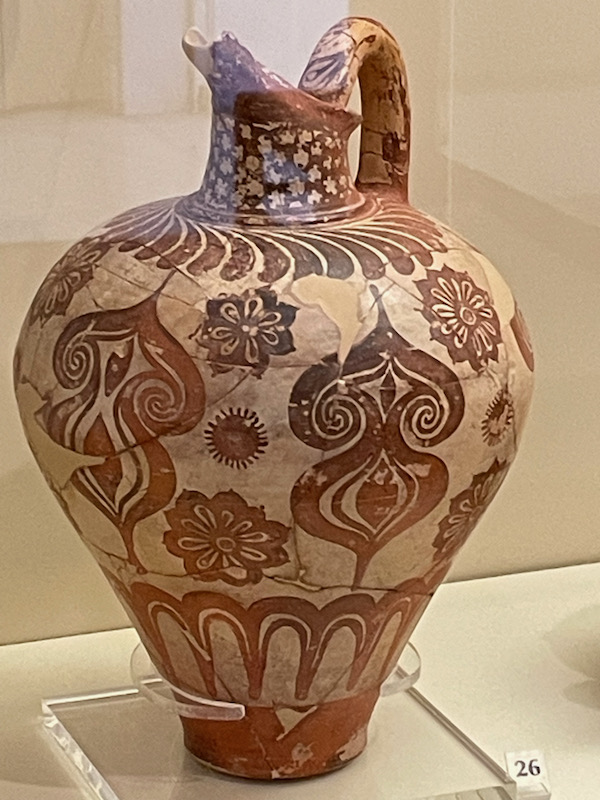
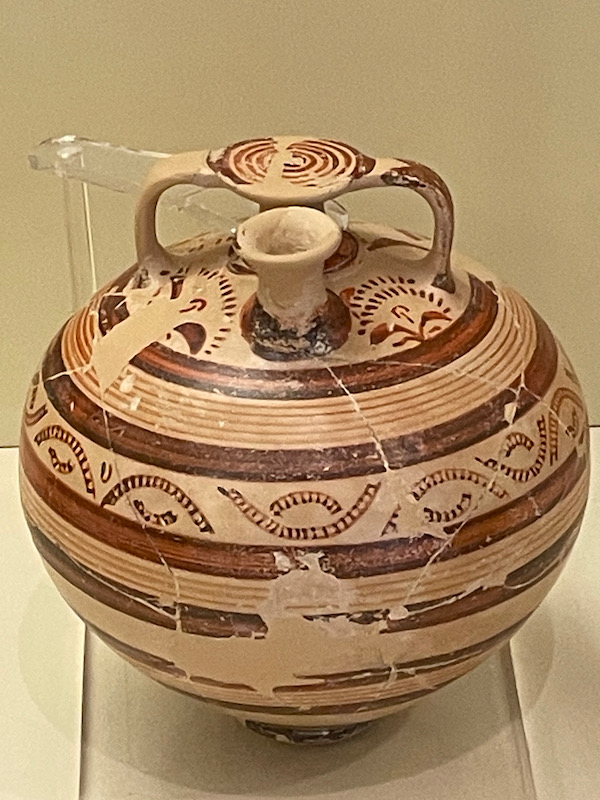
This is a piece of a fresco that is the lovely piece of a Mycenaean wall painting, dating from 1250-1180 BC. It shows a female figure with her hands raised, holding sheaves of wheat.
